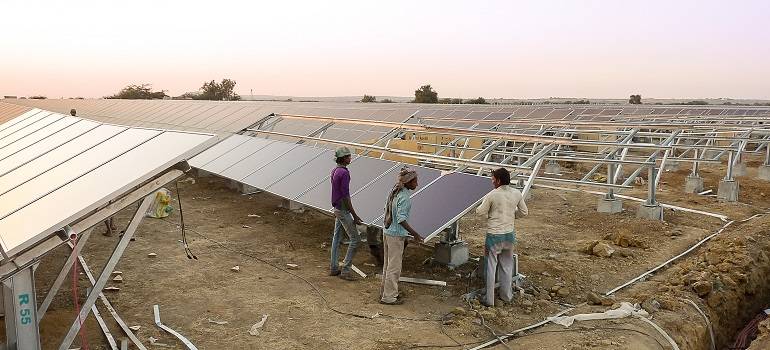GOGLA-led forum in New Delhi highlights India’s potential to create 35 million green jobs by 2047 through distributed renewable energy, while experts urge stronger policy support and innovation partnerships.
The South Asia Forum for Distributed Energy (SAFDE) 2025, hosted by GOGLA with support from Good Energies and the IKEA Foundation, marked a major milestone in the regional push for clean energy transformation. Held in New Delhi, the forum brought together over 300 delegates from across South Asia, including high-level government officials, financial institutions, industry leaders, and development partners to accelerate collaboration and investments in the distributed renewable energy (DRE) sector.
Key Highlights and Insights
A standout message from the event came from Ashish Khanna, Director General of the International Solar Alliance, who emphasized the need for private sector innovation backed by enabling government policies. He called for results-based financing to make DRE technologies more accessible to the poor.
GOGLA unveiled a significant statistic that captured the attention of attendees: India alone holds a $53 billion market potential in the DRE segment, which could lead to 35 million green jobs by 2047. These jobs would span technologies like solar irrigation, cooling systems, and clean mobility, offering a sustainable path to socio-economic development.
The forum also highlighted how GOGLA affiliates sold over 768,000 off-grid solar products in 2023 across South Asia, and India’s DRE sector created more than 80,000 jobs from 2019–2021. By 2030, DRE is expected to help avoid 0.2 million tons of CO₂e emissions, making it a key lever for climate action.
The Role of Innovation and Technology
Sarah Malm, Executive Director of GOGLA, stressed the transformative impact of DRE, noting its ability to power local economies, improve climate resilience, and promote sustainability. She underscored the potential of integrating AI and digital platforms to enhance operational efficiency and expand energy access.
One of the event’s highlights was the pre-launch of a GOGLA study exploring the synergy between grid and off-grid systems, advocating a model that benefits both DISCOMs and private players. The study argues that smart integration could lower costs, increase access, and stimulate energy innovation.
International perspectives were also brought in by Harish Hande of SELCO Foundation and Ronald Mekata from Papua New Guinea, who shared successful DRE implementations and innovation models across borders.
Pros of the SAFDE 2025 Forum and DRE Outlook
- Massive Job Creation: Projected 35 million green jobs by 2047 can transform rural economies.
- Climate Impact: Significant reduction in CO₂e emissions supports India’s climate goals.
- Technological Advancement: Push for AI, digital platforms, and smart grid-off-grid integration.
- Market Opportunity: A $53 billion DRE market signals robust investment potential.
- Public-Private Synergy: A collaborative approach promises sustainable scalability.
Cons and Challenges Ahead
- Policy and Regulatory Gaps: Success depends heavily on proactive government frameworks and consistent policy support.
- Affordability and Financing: High upfront costs and lack of accessible financing may hinder adoption for poorer communities.
- Infrastructure Integration: Integrating off-grid solutions with traditional power grids remains complex.
- Skilled Workforce Shortage: Training 35 million people for green jobs requires massive upskilling initiatives.
- Dependence on Private Sector: Over-reliance on private innovation without equitable policy intervention can deepen energy access inequality.
SAFDE 2025 successfully spotlighted India’s leadership in distributed renewable energy and reinforced the sector’s critical role in achieving a just, inclusive energy transition. The event served as a rallying cry for governments, financiers, and entrepreneurs to work in tandem toward climate-smart, community-centric energy solutions. However, real progress hinges on overcoming policy bottlenecks, enabling affordable access, and ensuring grassroots participation in the green energy revolution.
For continued updates on clean energy developments in South Asia, follow Climate Samurai.


